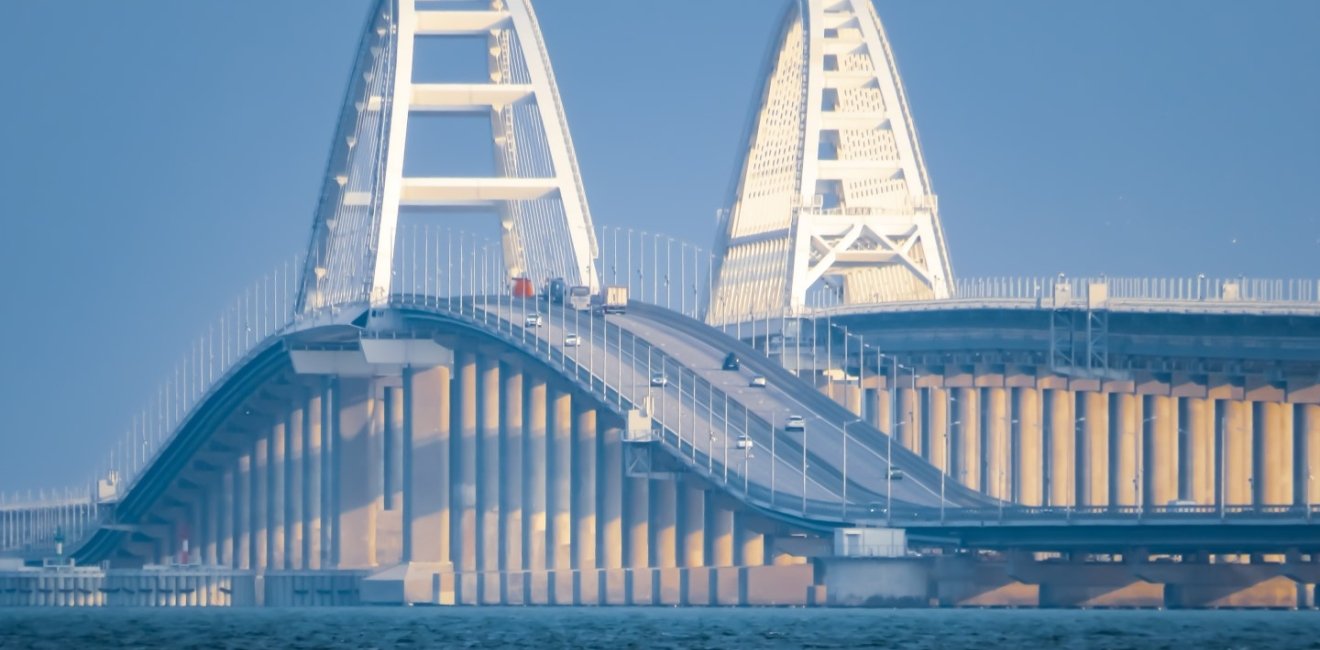
A blog of the Kennan Institute
In February 2014, the Russian army invaded Crimea from positions it had established within the region and annexed the Ukrainian peninsula. In the ten years that have passed since then, a beautiful tourist destination has turned into a war zone. The West’s handwringing over the events in Crimea, accompanied by little action, told the Kremlin everything it needed to know.
A look back at those ten years suggests how bellicosities initially confined to a small geographic area blew up to draw European and North American governments and budgets into a hot war with global ramifications.
Background to Desolation
Crimea’s 1992 constitution affirmed it as part of Ukraine but gave the autonomous republic’s state council sweeping powers, including the power to establish relations with other states. The neighboring city of Sevastopol enjoyed similar provisions.
Crimea has historically been inhabited by about two and a half million people of various nationalities. The top three are Russians, Ukrainians, and Crimean Tatars, the indigenous people who, after the collapse of the USSR, began returning home from the countries to which Stalin had deported them during World War II.
After the dissolution of the Soviet Union and the codifying of a new constitution, Crimeans went about their lives, paying little heed to politics writ large—until 2014. The peninsula was far from Kyiv, and political scandals rarely captured the attention of its inhabitants. Nevertheless, local political life flourished. One of the prominent players was Sergei Aksyonov, leader of the Russian Unity movement and party.
In the 2010 elections to the Crimean parliament, Russian Unity garnered only 4 percent of the vote, suggesting it was not particularly popular among Crimeans, unlike Viktor Yanukovych’s Party of Regions or Yulia Tymoshenko's bloc. The movement for a Russian Crimea was considered marginal and lacked broad support.
However, the Euromaidan, or Revolution of Dignity, which began in the fall of 2013 and ended with President Yanukovych fleeing to Russia on or about February 24, 2014, upset Crimea’s political equanimity. Anti-Maidan street demonstrations began, with some publicly calling for Russia to intervene and take Crimea under its wing.
Such sentiments spread among Crimeans with unnatural speed. Soon, unmarked Russian military personnel, dubbed “little green men” because they had removed identifying insignia from their military garb, began appearing in the peninsula.
The first stage of the takeover was easy because Russia had a military base in Sevastopol, and the public explanation for the arrival of new personnel in mass waves was “routine military exercises.” The task of these early arrivals was to prepare Crimea for annexation.
Referendum and Annexation
A much-disputed referendum took place in Crimea and Sevastopol in March 2014, barely a month after the Euromaidan ejected Yanukovych. With high voter turnout, the official tally was 95 percent in favor of Crimea integrating with Russia. The number was so high not only because many locals voted for it but also because there was no “against” option on the ballot. The referendum was organized in flagrant violation of the law: only two weeks elapsed between the announcement of the referendum and election day. Many polling stations were closed, and those that were open were guarded by armed men who prevented independent observers from entering.
In the run-up to the referendum, the little green men took up key positions throughout the peninsula. They blocked access to Ukrainian military bases and, with the help of local "self-defense" units, suppressed public protests against the referendum and illegally imprisoned pro-Ukrainian activists.
The annexation of Crimea was the first such episode in Europe since World War II and a sign of Russian president Vladimir Putin’s intent to reshape global power relations.
Despite the significance of the moment, Western officials chose restraint. No harsh sanctions were enacted against Russia, and business and diplomatic ties remained, for the most part, in place. The “stand aside” position of the West was perhaps best epitomized by then U.S. president Barack Obama’s reticence on the subject: he made it clear that America was not going to intervene in a "local conflict" because the United States did not want a war with Russia. In Ukrainian activist circles, the phrase "deeply concerned" came to symbolize the toothlessness of world leaders.
A restrained response to the invasion saved security in the European theater in the short term but severely damaged it in the long term.
The First Year of the Occupation
After the referendum, Russian security services moved quickly to subjugate the locals to their new Russian overlord and destroy institutions.
After representatives of Ukrainian security agencies and military officers left the peninsula, Russian bureaucrats began arriving. Passport offices began accepting applications for Russian citizenship, notaries began reregistering real estate, and lawyers began integrating Russian laws. The Russian Unity party merged with United Russia, and on October 9, 2014, Sergei Aksyonov officially became the head of the Crimean Autonomous Republic within the Russian Federation.
The FSB (Russian security service) was also active. The practice of conducting security checks in the streets became widespread: informal "self-defense" units, for example, could detain anyone who aroused their suspicion or failed to exhibit the expected ideological alignment with the occupiers.
Those who openly demonstrated a pro-Ukrainian stance, supported the resistance movement, or wore Ukrainian symbols came under threat first. For example, in May 2014, the FSB arrested four Crimeans and accused them of creating a terrorist cell that allegedly planned explosions on the peninsula. Among them were filmmaker Oleg Sentsov and photographer Gennady Afanasyev. All four received long prison sentences, and only after five years returned to Ukraine in a prisoner exchange. Both testified that FSB officers had tortured them.
Shortly after the annexation, pro-Russia protests began in Donetsk, Luhansk, and various cities in the Donbas region in Eastern Ukraine. Local residents, fueled by Russian political technologists and daily immersion in propaganda, wanted to secede from Ukraine and become autonomous or join Russia. The example of the unpunished and almost bloodless annexation of Crimea inspired those who harbored pro-Soviet sentiments and were dissatisfied with living conditions in a Ukraine struggling economically and trying to gel as a nation.
At first, pro-Ukraine citizens tried to act against the separatists, but the situation quickly escalated. The security forces in Donetsk and Luhansk sided with the separatists. In the face of such pressure, civilian resistance faded, and military conflict took root.
The same people who had helped organize and execute the annexation of Crimea then went on to organize the occupation of the Donbas. Among them were Igor Bezler, a member of Russia's Intelligence Service (GRU), and Igor Strelkov (Girkin), a former FSB officer.
Events on the Mainland Hastened a Rupture. . .
In that first year after annexation, Crimea was also buffeted by events on the mainland. With an eye to influencing the Russian leadership, Ukrainian activists and politicians created pressure in a variety of ways to prevent Russia from taking full possession of Crimea. In October 2014, for example, authorities cut off the water supply to the North Crimean Canal, which provided most of the peninsula's water needs. In late 2015, activists, most of whom had fled Crimea, implemented a months-long energy blockade of the peninsula, resulting in blackouts over the winter.
The difficulties experienced by Crimeans as a result of activities directed from the mainland led to a rupture of ties between the mainland and the peninsula. Crimea began to be referred to as an island.
As Did the Occupation
According to social psychologists, two years of living under occupation is all it takes to change a person's way of thinking. Residents' habits, reactions, and interpretation of the situation they are in can change dramatically—if the new conditions represent a radical severance with the past.
The Russian authorities have done everything possible to completely cut off Crimeans from their past as part of Ukraine, with a shared history and common government. Transport communication with the mainland was stopped. Russian products in supermarkets replaced Ukrainian products, and a Russian passport became mandatory for everyone who wanted to stay in Crimea.
The Fate of the People
Since Russia annexed Crimea, from 54,000 to 200,000 people have left the peninsula, including more than 30,000 indigenous Crimean Tatars, who had rejected Russian interference from the very beginning. At the same time, about 700,000 Russian citizens have moved from Russia to the annexed territory, replacing some of the displaced local population.
From 2014 to 2022, human rights activists recorded more than 5,000 human rights violations, most of them against Crimean Tatars.
In February 2022, when Vladimir Putin declared his intention to invade Ukraine and set in motion the current horrific phase of war, it was Crimea that became a key location for the invasion. The military bases and infrastructure built over the years of occupation—one of its most important elements is the Kerch Bridge, the scene of heavy fighting—helped Russian forces invade from the south and hold positions.
The occupation of southern and eastern Ukraine in 2022 was the most successful of all the Russian army's operations because through Crimea, Russia has been able to control positions both by land and by sea. Crimea has now become a full-fledged war zone and a high-interest target of Ukraine's military actions.
Creeping Global Effects
During the ten years of occupation, the Russian government in Crimea has destroyed tens of thousands of economic, political, and personal ties between people, turning one of the most attractive destinations in the world into a front line of war. The international community's mistakes in 2014 have had unanticipated global effects.
Crimea’s annexation tragically underscored how the West’s fear of an aggressive nuclear state ultimately helped create a catastrophe that has now killed hundreds of thousands of people on the European continent. The annexation of Crimea escalated into a protracted war in the Donbas, followed by a full-scale invasion of Ukraine and a genocide that no one knows how to stop.
The opinions expressed in this article are those solely of the author and do not reflect the views of the Kennan Institute
Author


Kennan Institute
The Kennan Institute is the premier US center for advanced research on Eurasia and the oldest and largest regional program at the Woodrow Wilson International Center for Scholars. The Kennan Institute is committed to improving American understanding of Russia, Ukraine, Central Asia, the South Caucasus, and the surrounding region through research and exchange. Read more

Explore More in Focus Ukraine
Browse Focus Ukraine
Talking to the Dead to Heal the Living

Ukrainian Issue in Polish Elections


